During our Jordan round-trip, we definitely wanted to visit the capital, Amman, and get a feel for the 4-million-strong metropolis. After visiting the rock city of Petra, crossing the Wadi Rum Desert, and bathing in the Dead Sea, it was time for some city life. Amman is located in the north of the country and is just under an hour’s drive from the Dead Sea. We did a bit of online research beforehand and discovered that the city is supposed to be quite lively, hip, and modern. We saw lots of street art, cool cafes, and impressive buildings in online pictures that we definitely wanted to see. You can read about the best Amman sights and all our tips in today’s post. Enjoy browsing!
You should also know:
- Currency for Jordan
- Entry & Visa Jordan
- Best time to travel to Jordan
- Safety in Jordan
- Driving & Rental car
- Off to the Wadi Rum Desert
- Top Jordan Sights
- All about the rock city of Petra
- Round trip through Jordan
- Off to the Dead Sea
- You should also know:
- General information about Amman
- Arrival & onward travel
- Our accommodation in Amman
- Cool central hotels in Amman
- The top Amman attractions
- Rainbow Street
- Street art in Amman
- Wild Jordan Center
- The souqs (markets)
- Al-Husseini Mosque
- The Roman Theater
- The historic citadel
- Jabal Al Lweibdeh
- Tours & Excursion Tips
- Off to the Dead Sea
- Mount Nebo
- Ma’in Hot Springs
- Ruins in Jerash
- Conclusion on Amman
General Information about Amman
The city streets are bustling with people, cars are pressed close together, singing echoes from the minarets, and market vendors loudly hawk their wares. Amman is a mix of culture, tradition, and modernity, influenced by Greek, Roman, and early Islamic cultures. The city’s young people chill with their laptops in hip cafés, cruise down Rainbow Street in their cool cars, and enjoy the evening smoking shisha.
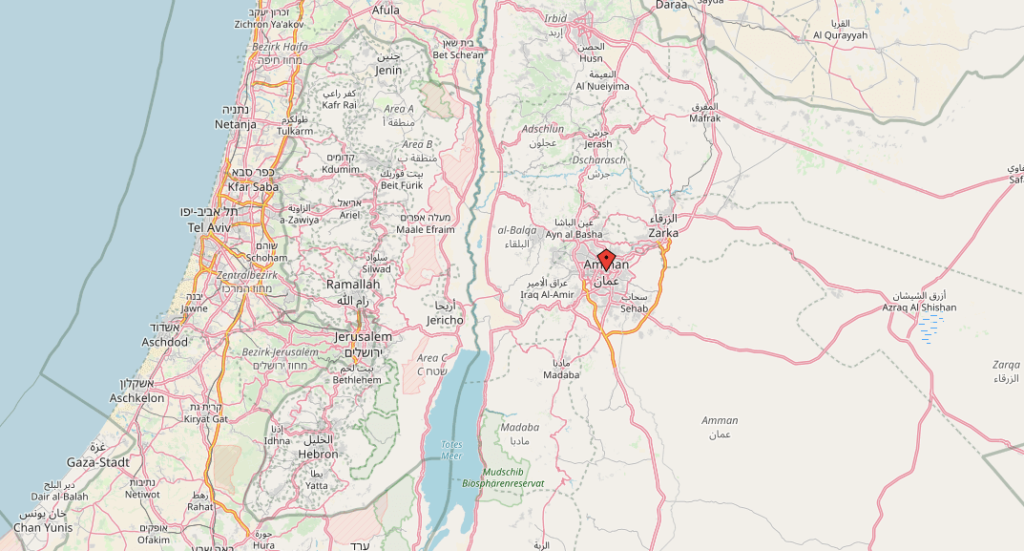
Amman is the capital of Jordan and is home to more than 4 million people. The city was once built on seven hills, across which thousands of white stone houses are now spread. While the civil war rages in Syria just a few hundred kilometers away, you don’t notice it in Amman. The people are incredibly friendly and cheerful, the streets are bustling and colorful. The city is one of the oldest in the world and continues to grow at the fastest pace. In just 10 years, the population grew from less than 1 million (2004) to over 4 million (2014).
Arrival & Onward Travel
By plane: Most tourists first set foot on Jordanian soil in Amman, as they land at Queen Alia International Airport. Flights depart from Munich and Berlin with Royal Jordanian, from Memmingen with Ryanair, or from Frankfurt with Lufthansa. It takes about 4.5 hours to fly from Germany to Jordan’s capital. Remember your visa; more information here.
By rental car: From the Dead Sea, we set off for the capital in our rental car*. After just under 90 minutes, we were in the center, after running straight into rush hour traffic, which meant everything took a bit longer. From Aqaba, it would take around 4.5 hours, from Petra 3.5 hours, and from the Wadi Rum Desert almost 5 hours.
Our Accommodation in Amman
In Amman, we booked a super central stay, the Nomads Hotel. This cool place is only about a 20-minute walk from the Roman Theater. Generally, we could reach everything on foot from there. The Nomads Hotel is spread over several floors, with the reception and “living room” on the first floor. At the very top, on the roof, there’s a great terrace with a view of the city and the breakfast room.
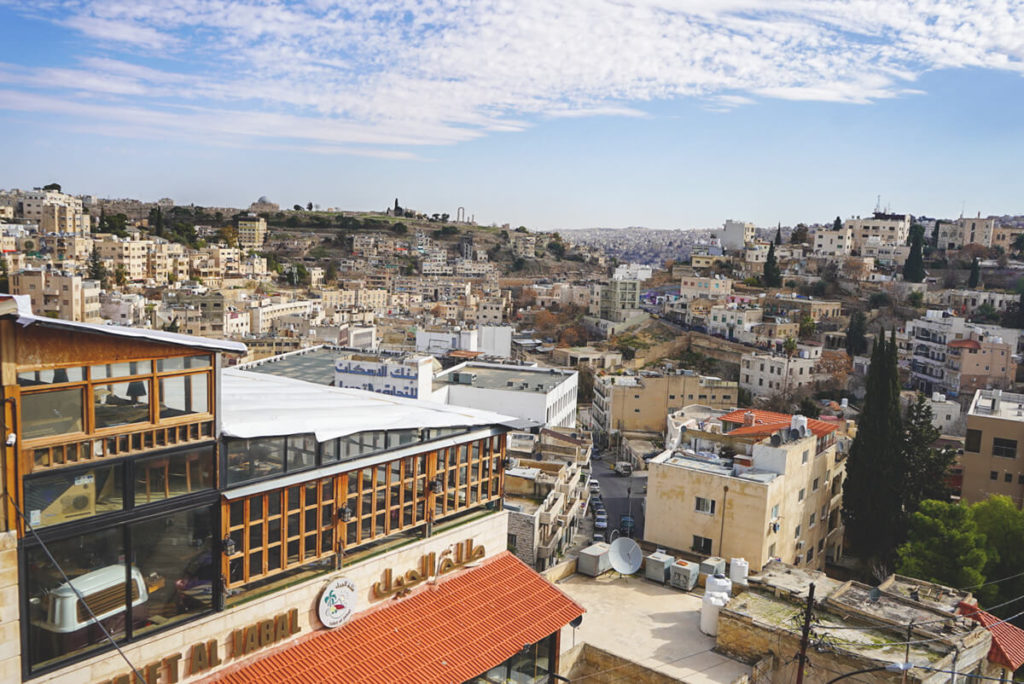
The rooms are simply but modernly furnished with a TV, air conditioning, a chair and table, storage space, a comfortable bed, and a small bathroom with a shower. The internet was very stable and freely available on all floors. Free tea and coffee are available in the living room, where you can also play a game of table football, read, or play on the PlayStation. We paid €48 per night including breakfast and booked in advance here: Nomads Hotel Amman*. We would choose this hotel again, as it was simply perfect for our city trip!
Cool central hotels in Amman
The top Amman sights
The city is huge, yet the most important sights in Amman are located right in the city center. Grab a city map from your accommodation and just go with the flow. Many spots are discovered purely by chance while strolling by. We’ll show you the highlights you definitely shouldn’t miss and take you on a virtual city tour.
Rainbow Street
Just 400 meters from our accommodation is the famous Rainbow Street. Numerous cafés, restaurants, rooftop bars, galleries, and shops awaited us here. Also nearby is the Souk Jara market, where you can buy handmade items and enjoy delicious food, as well as clothes, lots of art, and other traditional items. This market takes place every Tuesday in winter (November to March) from 10 p.m. to 2 a.m. (with film screenings, concerts, etc.).
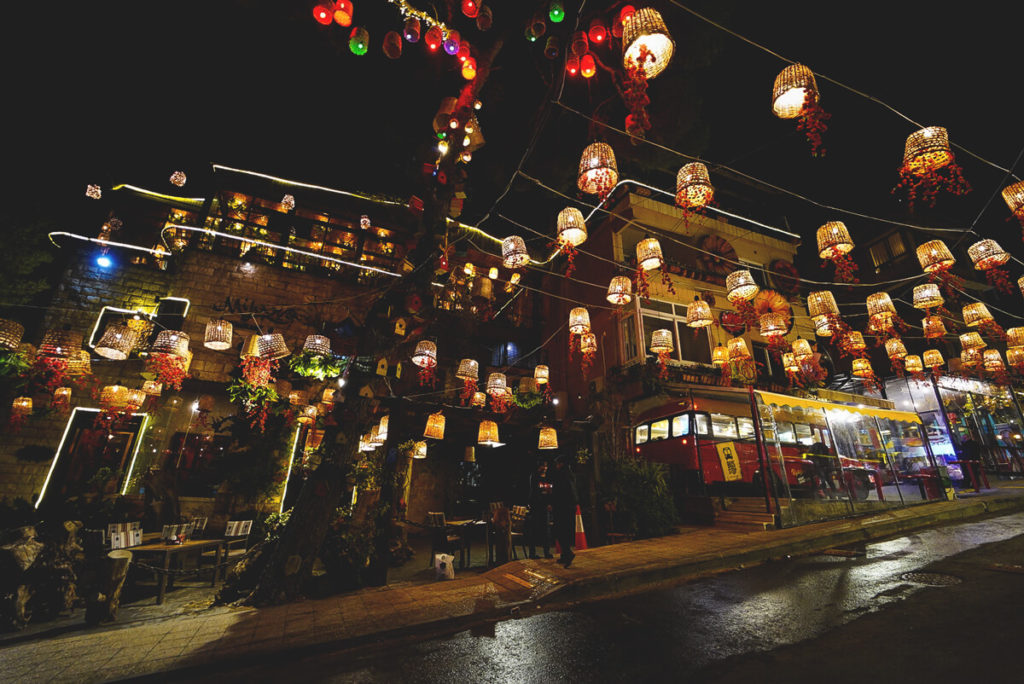
Just before Rainbow Street, there’s a small street with hundreds of colorful lights. There you’ll also find the ultra-stylish Restaurant Mijana with its many lamps (google it) and the still-fun burger joint Bus Stop. Old buses and parts of them have been converted and refurbished into seating and dining areas. On Rainbow Street itself, we can 1000% recommend a visit to Tim’s Burger or a round of hummus and falafel at Al Quods Falafel.
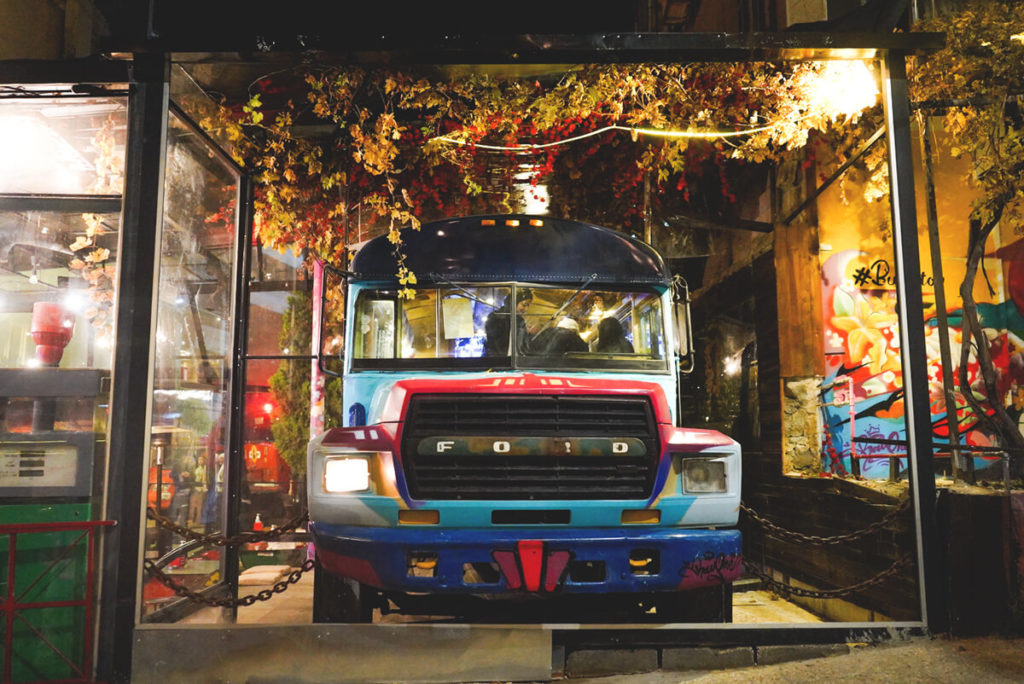
Street Art in Amman
On our way to the Wild Jordan Center, we discovered a lot of graffiti on the walls. The whole city is said to be full of it, and we photographed at least 20 of these cool designs in one day. The street art scene in Amman is small, but you can still find really cool pictures on facades in every district of the city. If you’d like to see some of the works, you should follow the @ammanstreetart account on Instagram.
To make it easier for you, we won’t reveal the locations of the works. Go with the flow and discover some of them on your own by walking through the city with your eyes open. You can spot some of the works of art from a distance, as they are oversized and decorate entire building facades.

Wild Jordan Center
From Rainbow Street, continue east to the Wild Jordan Center. The building houses a fantastic shop selling locally produced items, such as hand-picked tea from the Dana Biosphere Reserve, handmade soap from a small village in Jordan, and even hand-sewn coasters and postcards from local artists. The absolute highlight is, of course, the very stylish café and terrace overlooking the city. The menu features delicious, fresh, and healthy dishes such as salads, bowls, and sandwiches.
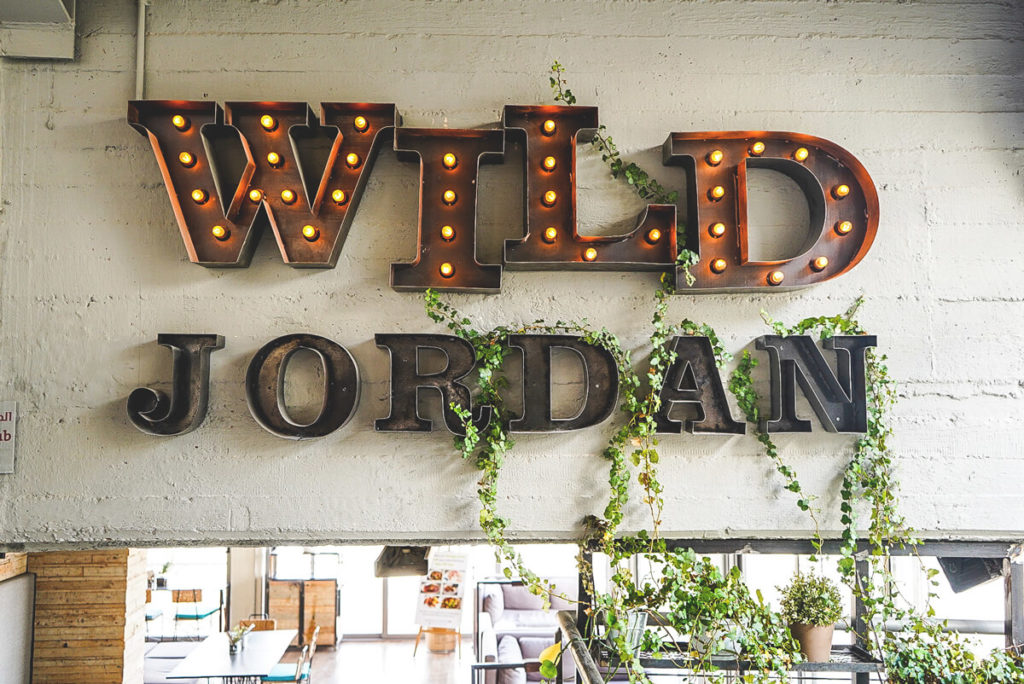
This is also a great place to sit and work with your laptop or simply enjoy the view with a coffee. The Wild Jordan Center is owned by the Royal Society for the Conservation of Nature and supports the local communities living in the country’s eight reserves. These include Mujib Nature Reserve, Dibeen Forest, Ajloun Forest, and the Shaumari Wildlife Reserve. The center also supports eco-tourism and offers customized tours and unique experiences that reflect this philosophy.
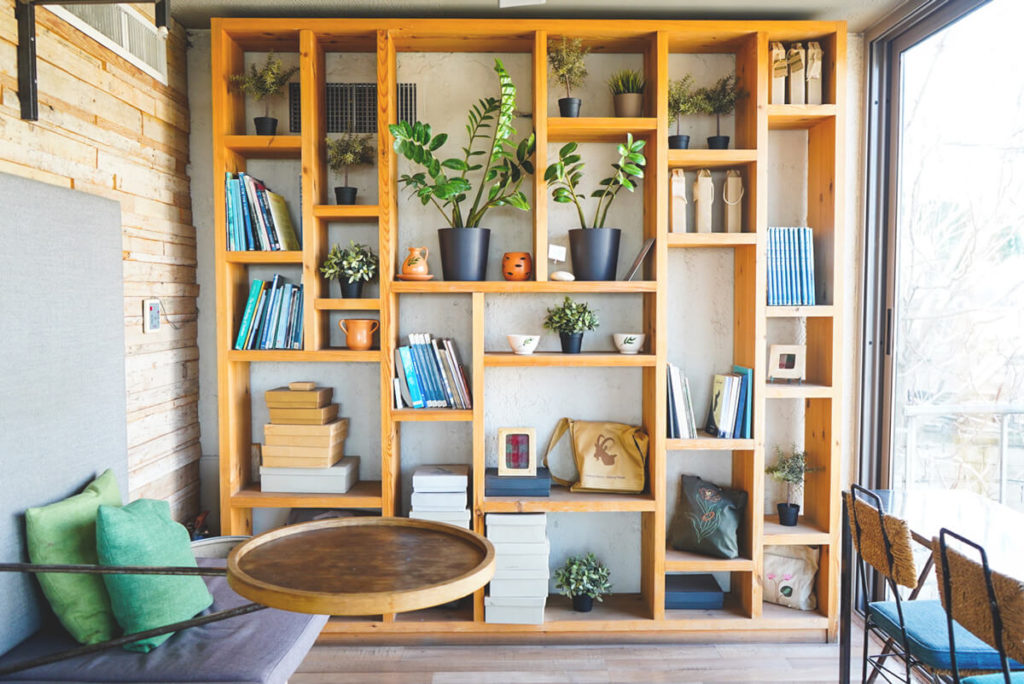
The Souqs (Markets)
Shortly before the Al-Husseini Mosque, we find ourselves amidst the colorful markets and couldn’t get enough of the abundance of fruit and vegetables. Here, you can find absolutely everything you can imagine. Not to mention the many spices, drinks, meat, fish, cheese, and so on. We stand out, but are greeted warmly by everyone and always with a smile. We don’t see any tourists here; only the locals themselves shop here. The Golden Souq is the most famous market in the entire city. Souvenirs are best bought at the Souq Bukharia, and everything related to fruit, vegetables, etc. can be found at the Souq Al-Sukar.
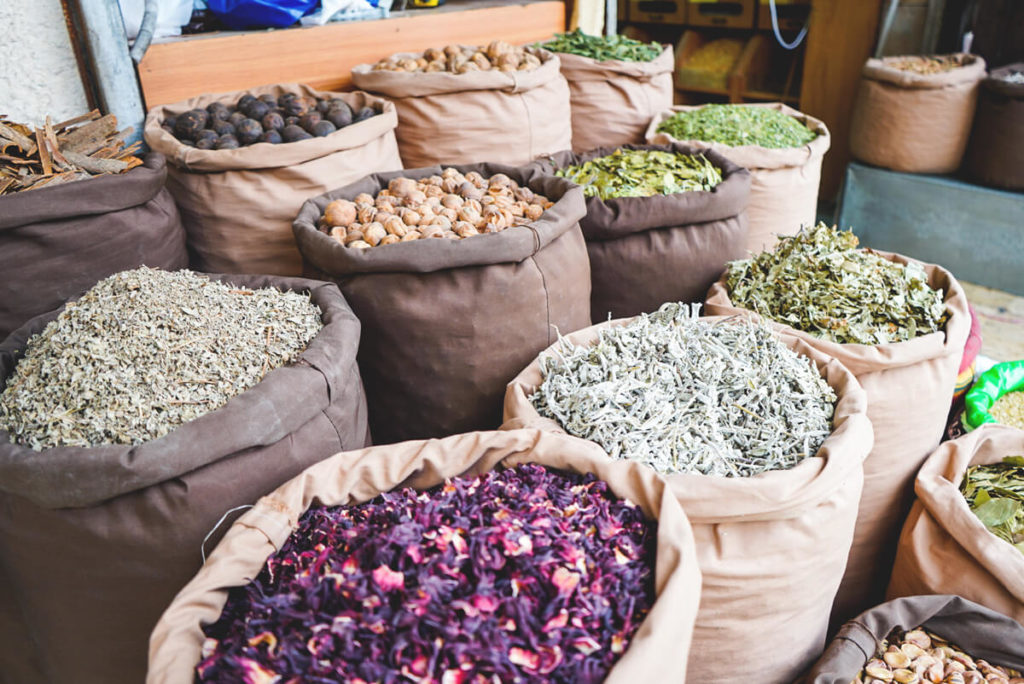
Al-Husseini Mosque
In the center is one of the largest mosques in the capital, the Al-Husseini Mosque. This mosque was built in the Ottoman style and supposedly stands on the remains of the 7th-century Umayyad Mosque. This building is located right in the center, directly between the souqs, the Roman Theater, and the Citadel. Both minarets of the mosque (see photo) are different heights and also have different designs. We can’t tell you why, though. It’s bustling in front of the mosque, and people are milling around everywhere. If you’re dressed appropriately, you’re allowed to enter. There’s an entrance for men and one for women.
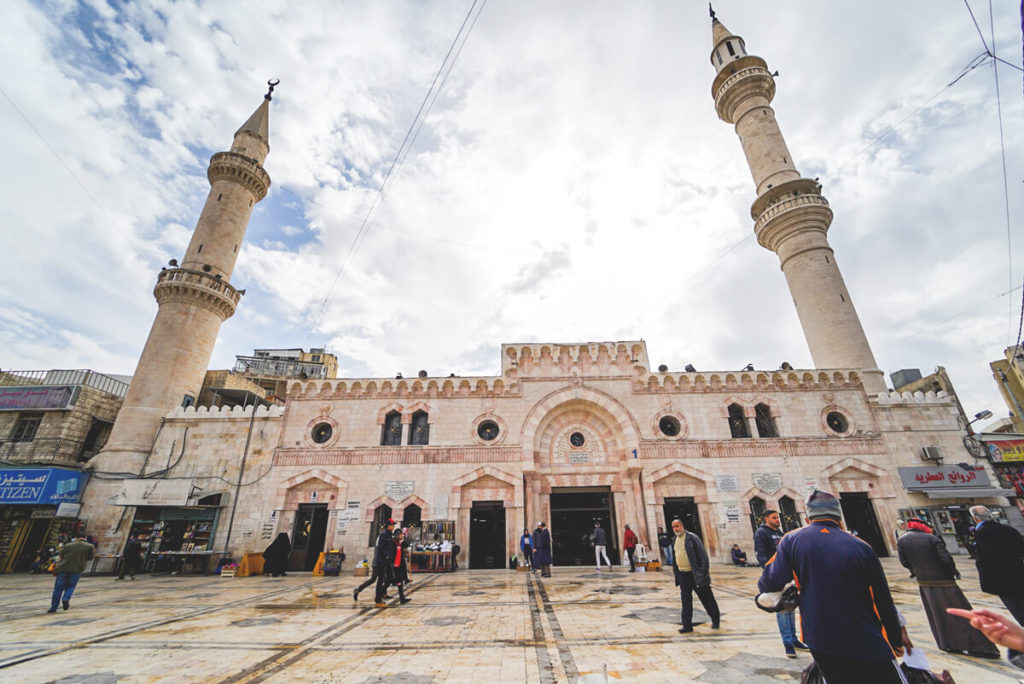
Unfortunately, we didn’t have enough time to visit the King Abdullah Mosque, which was built between 1982 and 1989 by King Hussein to honor his grandfather. The mosque has a magnificent dome with blue mosaics, reminiscent of the Dome of the Rock in Jerusalem. Up to 3,000 Muslims can pray here simultaneously. Crazy, right? We were repeatedly approached by taxi drivers who wanted to take us to this very mosque. If you have enough time, a detour there is definitely worth it.
The Roman Theater
A few minutes’ walk further, and suddenly we were standing directly in front of the enormous ruins of the Roman Theater. It was a pretty crazy sight, considering we had just been in the middle of the bustling alleys of the souq. This building was probably built between 138 and 161 AD. According to various estimates, it could have accommodated between 6,000 and 11,400 people. The Roman Theater was extensively restored in the 1950s and 1960s and has been in use again since 2007 (Amman Opera Festival).
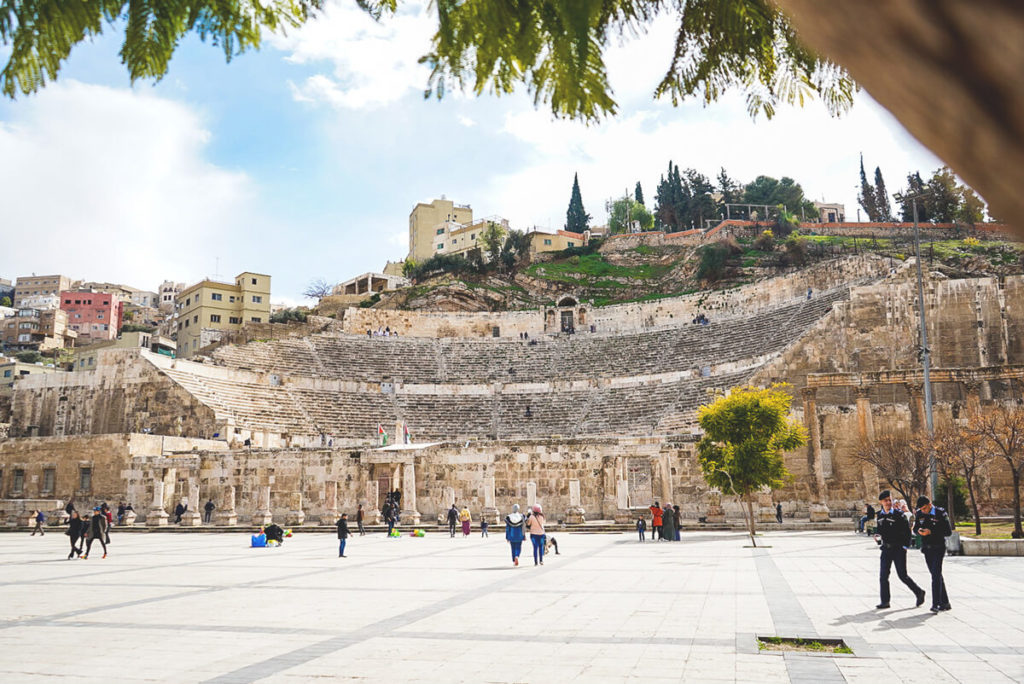
Interestingly, the rows of seats used to be arranged according to rank. For example, slaves, women, and foreigners had to sit at the top. In the halls on either side of the theater are two small museums: the Folklore Museum and the Museum of Popular Traditions. Be sure to take a look inside; we thought the exhibits there were fantastic. It’s fascinating to see how the Bedouins lived back then, what useful objects they had, and how they dressed.
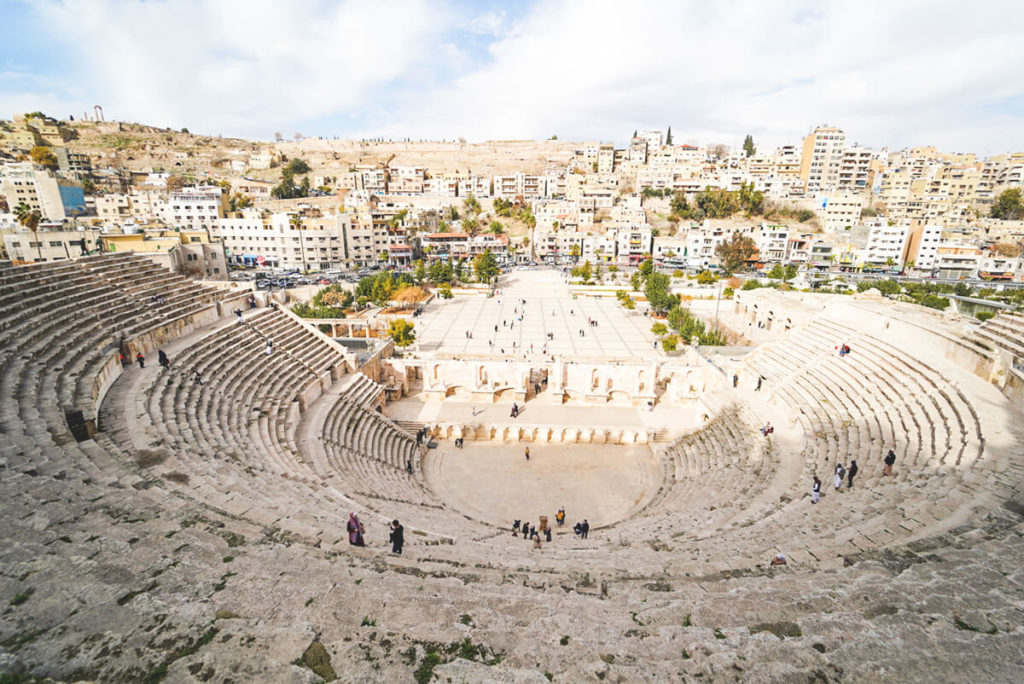
The Historic Citadel
From the Roman Theater, we decided to walk to the Citadel Hill. The taxi drivers in front of the theater wanted to take us up for 1 to 2 JD, but we preferred to do some exercise. After about 20 minutes and many steps, we reached the entrance to the Citadel on the Jebel el Qala’a hill. Amazing! What a view! From up here, we could see almost the entire city.
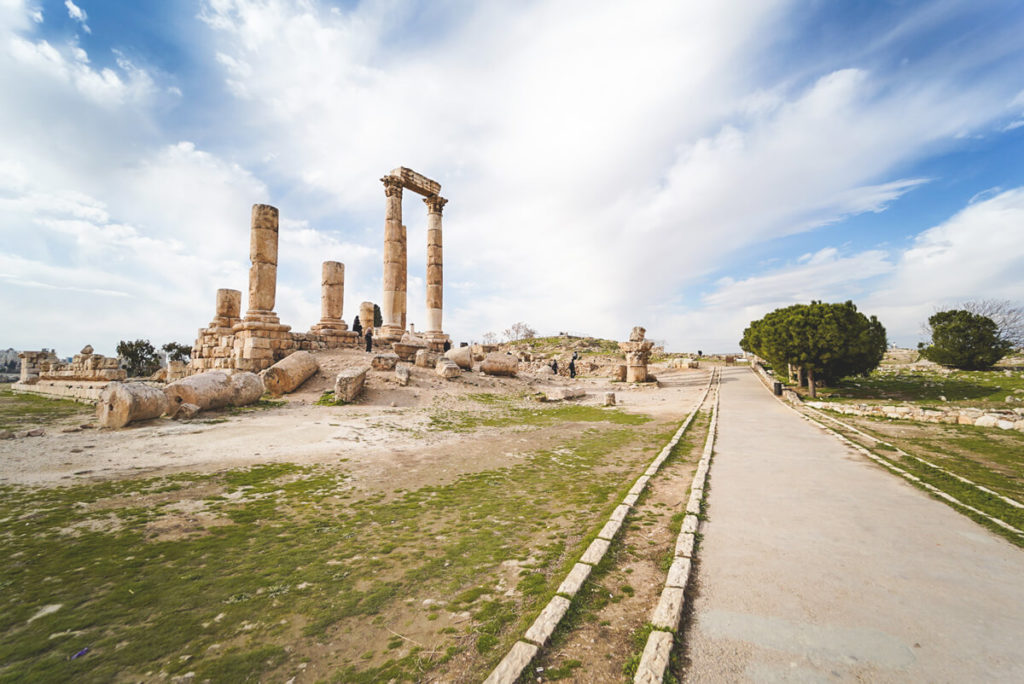
The entire area on the hill is quite large, so you should allow at least an hour to explore a few corners. The remains of the former Temple of Hercules are particularly astonishing. The hill is also said to be one of the oldest continuously inhabited places in the world and bears witness to important peoples. Remains of tombs, roads, staircases, walls, and other historical structures can be found here. The Umayyad Palace, with its magnificent entrance hall, is also very beautiful.
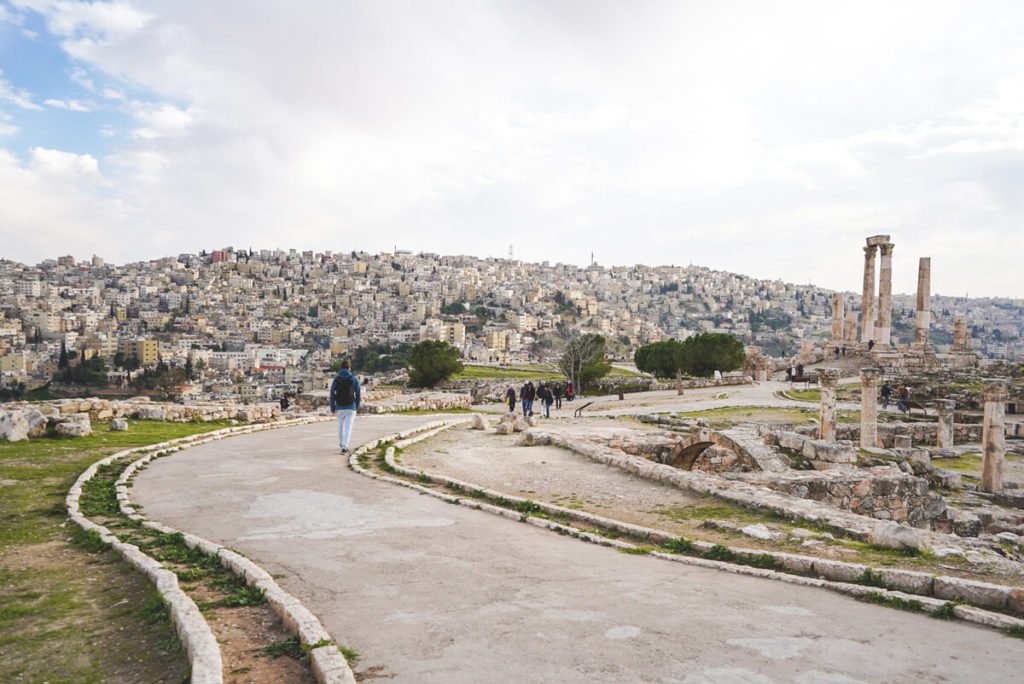
If you head to the Citadel in the evening, with a bit of luck you might hear the chanting of the muezzin. It was indescribably beautiful when the loud sounds of the mosques resounded from all directions after sunset. Take a moment, sit on the walls, and simply absorb this scenery.
Jabal Al Lweibdeh
From the Citadel, our tour continued to Paris Square. We took a taxi for 4 JD (7 minutes) to save some time. Here in the Jabal Al Lweibdeh district, you’ll find numerous galleries, cafés, street art, small shops, and restaurants. It’s mostly the young, hip, and cool locals who hang out here, just like we know from Berlin’s Kreuzberg or Friedrichshain. You can stroll through the streets, drink fantastic coffee, nibble on delicious cake, and simply let yourself go.
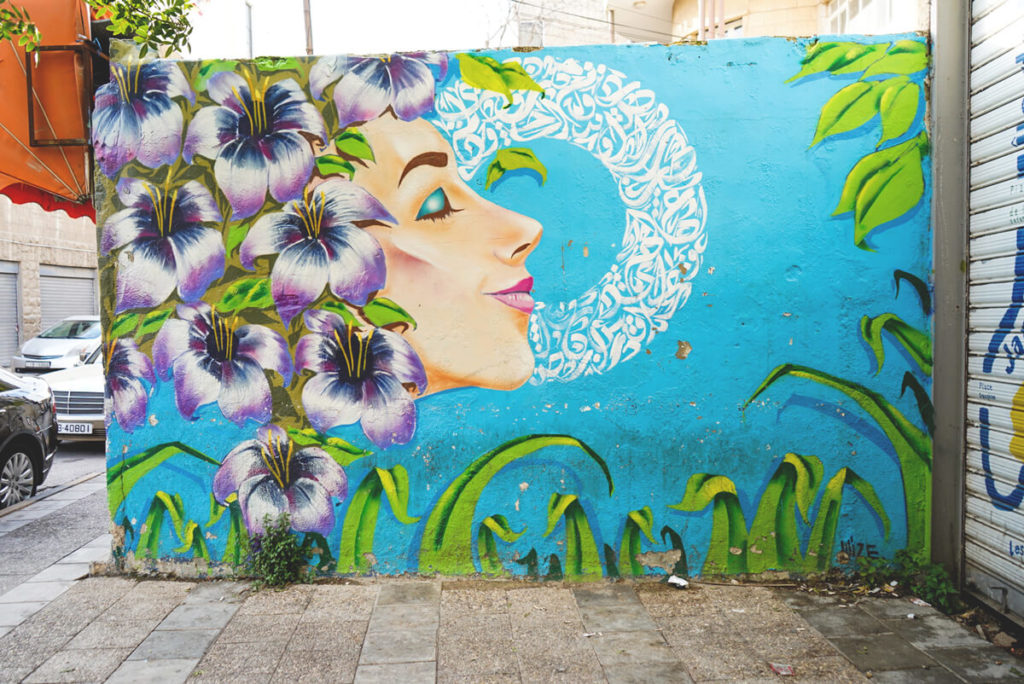
After our walk, we sat down in the cool Rumi Café and rested our legs. We ordered two cappuccinos, a slice of carrot cake, and a small brownie. We’re not exaggerating, but this was the best piece of cake of our entire trip to Jordan! We also really liked the atmosphere there. We also recommend: Rakwet Arab Cafe, Zokak Coffee House, Old Town Restaurant & Cafe, and Bait Baladna.
Tours & Excursion Tips
From Amman, it’s not far to several other highlights. If you’re traveling with your own rental car, you can make a few detours into the surrounding area. Do you know of any other excursions? Then feel free to write us in the comments and we’ll include your tips.
Off to the Dead Sea
From Amman, it’s just a stone’s throw to the Dead Sea. This trip is therefore ideal for a day trip. The beaches Amman Beach and OBeach have a 20-25 JD entrance fee. The other beach areas mostly belong to the resorts and can only be used by guests. For some resorts, you can also purchase a day pass and enjoy all the amenities, but this also costs at least 40 JD. You can book your day tour here*.

Mount Nebo
Mount Nebo is located just 36 km south of Amman and, at 808 meters high, offers a fantastic view of the Dead Sea and the Jordan Valley. Moses is said to have visited this mountain shortly before his death because God wanted to show him the Promised Land of Israel, which he also glimpsed from the summit. Guests from all over the world make pilgrimages to the mountain to commemorate this event at a gravestone. The Moses Memorial Church, with walls dating back to the 4th century, also sits atop the mountain. You can book your day tour here*.
Ma’in Hot Springs
Have you ever read anything about the Ma’in Hot Springs during your research? A large waterfall, a small waterfall, and various pools with hot thermal water from the highland plains await you there. The hyperthermal waterfalls are a popular destination for tourists and locals alike. Thousands of visitors come every year to enjoy the mineral-rich water. At the 5-star resort* located there, you can book a beautiful room and take advantage of the fantastic wellness offerings (mud packs, bubble baths, underwater massages, etc.). The hotel is located directly at the waterfall and is a beautiful oasis amidst the rocky landscape. Book your day tour to the Hot Springs here*.
Ruins in Jerash
The enormous ruined city of Jerash (or Gerasa) dates back to Roman times and is indeed ancient. According to records, the settlement history stretches back 6,500 years. It was the Romans who first turned the city into a metropolis with over 20,000 inhabitants. Here you can discover hundreds of columns, two colossal temples, a forum, and a hippodrome. From Amman, it’s only about 50 minutes by car to Jerash. The entrance fee is 10 JD, but it’s free with the Jordan Pass. You can book your day tour here*.
Conclusion on Amman
Opinions regarding Amman vary widely. We met a German woman who left after three hours because she simply didn’t enjoy the hustle and bustle of the big city. We, on the other hand, love getting to know a country’s metropolises. Even in Israel, we found it incredibly exciting to practically feel the stark contrast between Tel Aviv and Jerusalem. And it’s the same in Jordan; after all the natural highlights, it was interesting to immerse ourselves in Jordanian city life. Amman is a really cool city with many exciting corners. In our opinion, you should spend at least a whole day and evening here.
